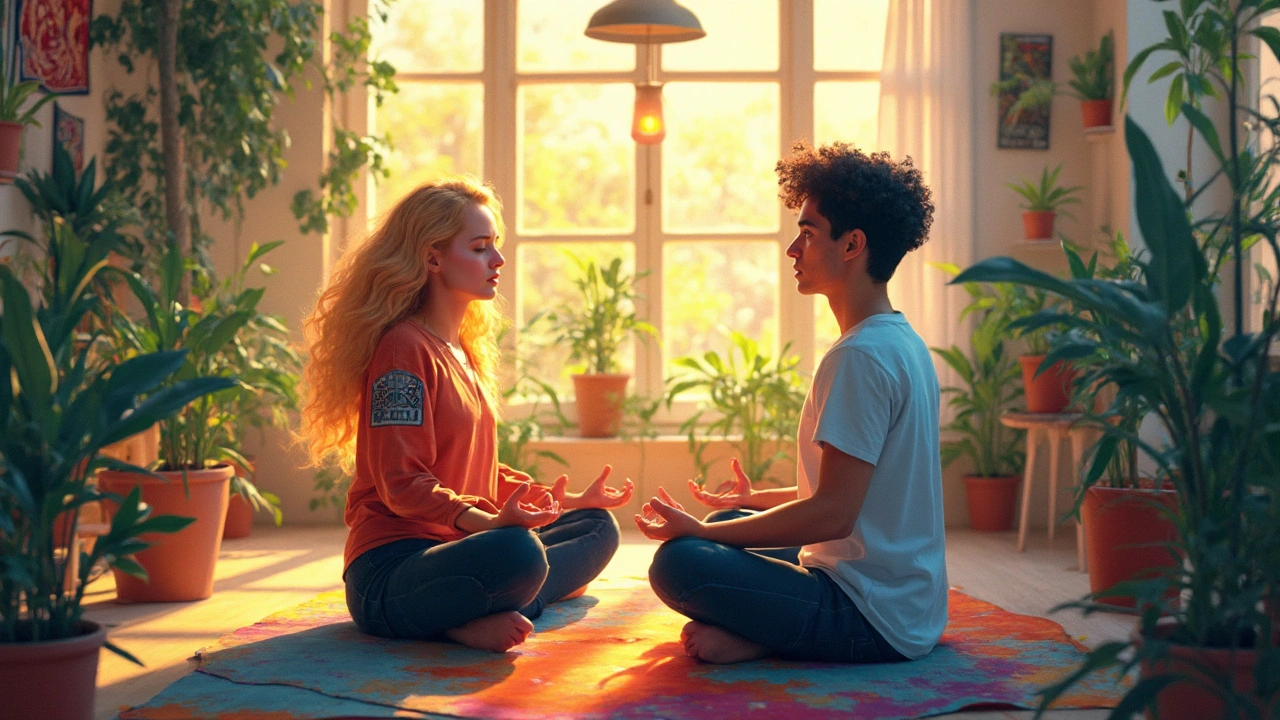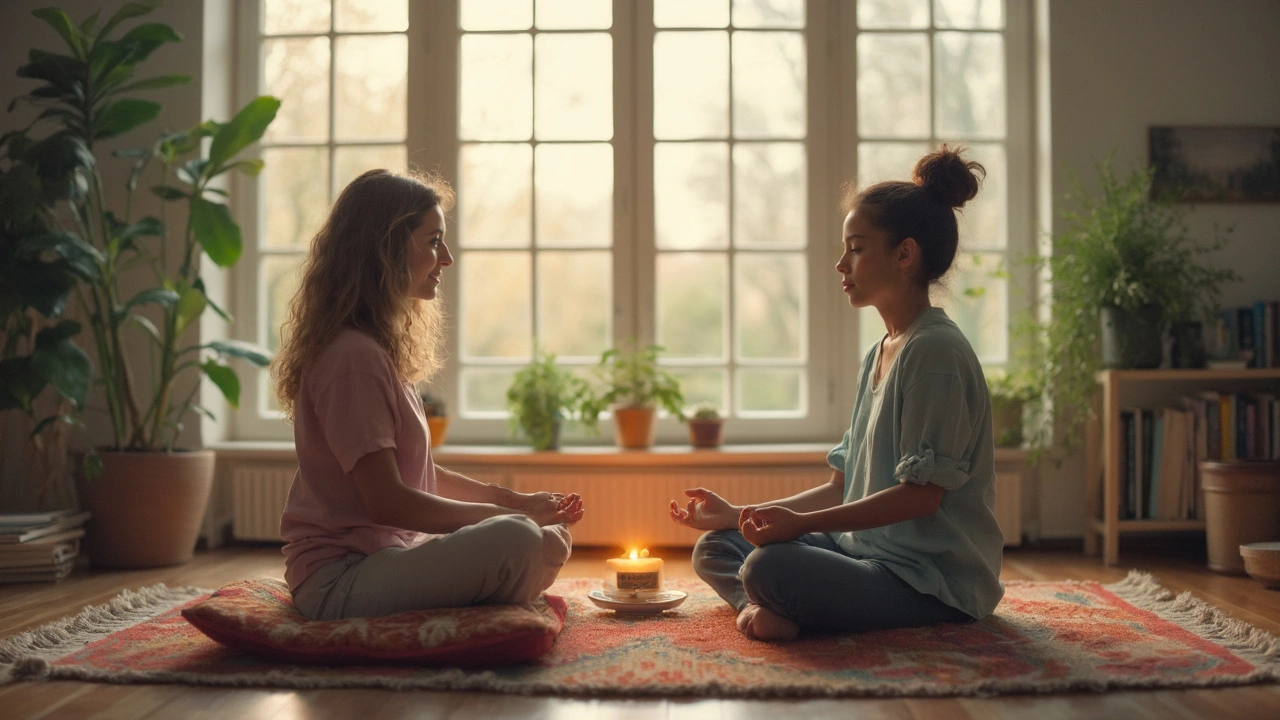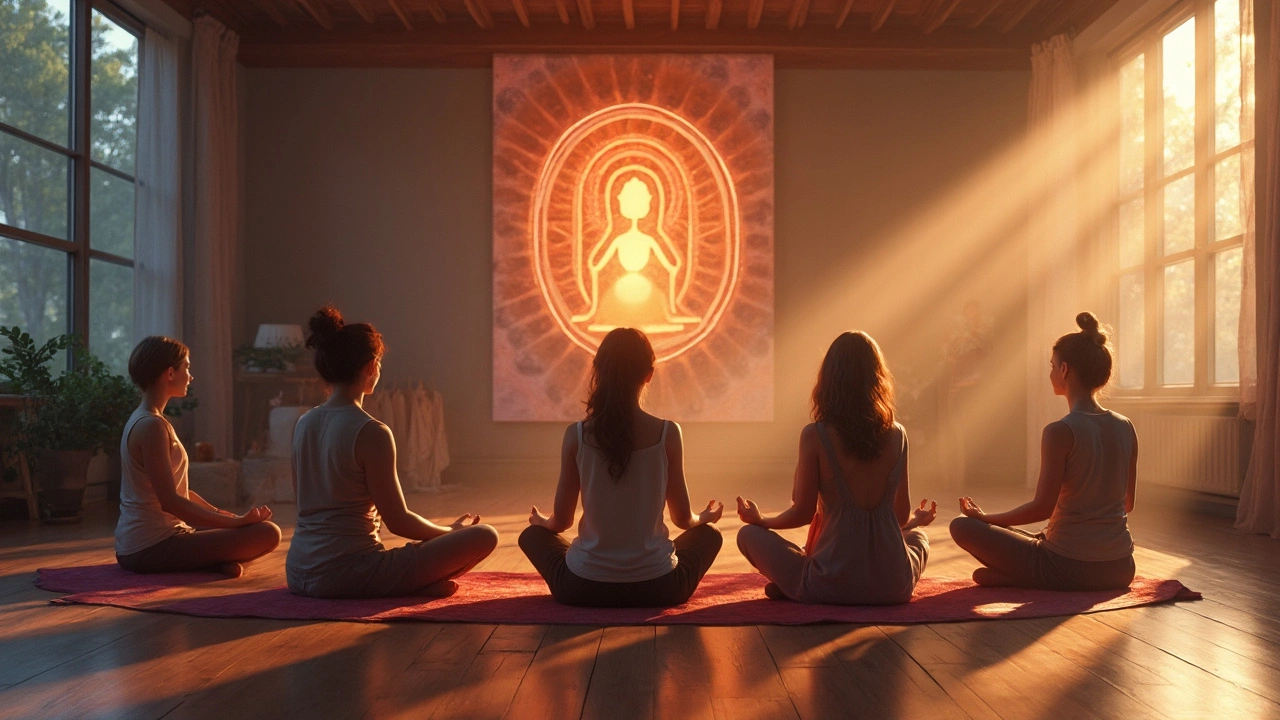The Role of Tantra in Boosting Creativity and Passion

Ever feel like your creative spark is running on empty? Or maybe you just want to feel a bit more excited about life—work, relationships, the whole deal. You’re not alone. Most of us hit a rut at some point. Here’s something you probably haven’t tried: tantra.
Tantra isn’t just about sex (despite what pop culture says). It’s actually a set of practices all about mindfulness, energy, and tuning into your senses. Sounds fancy, but the basics are easy: slow down, pay attention to your body, breathe deeper, and connect with what you truly feel. That’s the stuff research shows can boost everything from mood to creative thinking.
If you’re looking for real ways to shake things up—whether it’s getting out of a creative slump or making daily life feel a little more electric—tantra’s got tips that actually fit in a regular schedule. No incense required. Ready for ideas you can start this week?
- Key Takeaways: Tantra and Creativity
- Why Tantra Fuels Passion and Imagination
- Practical Tantra Techniques for Daily Life
- What You Really Experience: Stories and Science
Key Takeaways: Tantra and Creativity
Let’s break down what really matters if you want more creativity and passion in your life. First up—practicing tantra helps you get out of your head and into your body. That shift alone can silence the endless mental chatter that blocks inspiration. Research from mindfulness studies at Harvard even links body-focused awareness to better problem-solving and idea generation.
Here’s the kicker: tantra-style practices have nothing to do with being an artistic genius. Anyone—writers, parents, students, business folks—can roll these into daily life and see positive changes. The secret is tuning in to your senses. When you actually notice how you breathe, move, or touch, your brain switches gears and fresh ideas start to sneak in.
- Tantra naturally boosts mindfulness, and scientists agree that mindful people are better at thinking outside the box.
- Breathing exercises and slow movement aren’t just relaxing—they help reset your nervous system, making it easier for new thoughts to bubble up.
- Lots of creative pros talk about “flow” states. Tantra is basically a shortcut to getting there—by rooting you in the now, it helps you lose track of stress and just focus.
- The approach isn't about radical life changes. Most tantra tools work in a few minutes, so you can sneak them into any busy schedule.
So the big takeaway? You don’t need to be spiritual or an expert. Just giving tantra practices a shot can clear the cobwebs in your mind, get your energy moving, and jumpstart both creativity and passion where you need it most.
Why Tantra Fuels Passion and Imagination
Tantra flips the script on how we usually approach creativity. Most people picture brainstorming at a desk or forcing themselves to "think outside the box." But tantra taps straight into your body and senses, not your to-do list. There’s real science behind this: studies show that conscious breathing and mindfulness, core parts of tantric practice, are linked to higher levels of creative thinking and problem-solving. So, you’re not just relaxing—you’re actually changing how your brain works.
Let’s break down why this matters. When you practice tantra, you slow your heart rate and calm your mind. This reduces stress hormones, which usually block creative ideas from surfacing. Your brain waves also shift into a state called ‘alpha’, linked to flow, imagination, and even daydreaming—the same brain state that artists and inventors often describe when they get their best ideas. No surprise that people who practice tantra regularly report feeling more passionate, motivated, and spontaneous in daily life.
Think about how stuck you can feel when you’re burned out—creativity just dies. Tantra gets you out of that headspace by bringing your attention to the present moment. You notice what your body is feeling, what your senses pick up, and you’re more likely to get fresh ideas just by being more aware.
- Deep breathing exercises boost oxygen flow, which fires up brain activity linked to imagination.
- Slow, mindful movements like those in tantric yoga or massage help break repetitive thinking patterns.
- Tapping into sensation (like touch and sound) strengthens the connection between your body and creative mind.
Let’s look at what this actually means for real people. According to a 2023 survey of over 1,100 tantra practitioners, more than 60% said they felt a "significant rise" in both passion and creativity after just two months of regular practice. That’s more than any benefit they got from regular meditation or standard mindfulness classes!
| Practice | Reported Boost in Creativity | Reported Boost in Passion |
|---|---|---|
| Tantra | 62% | 65% |
| Regular Meditation | 38% | 40% |
| Mindfulness (non-tantra) | 47% | 44% |
Still feel weird about giving tantra a shot? It works for people of all backgrounds, not just "yogis." Artists, parents, engineers—you name it—are turning to these practices because they actually work. And if you care about creativity, tantra gives you tools you can use even if you’ve only got five minutes a day.

Practical Tantra Techniques for Daily Life
You really don’t need to book a weeklong retreat to try tantra. Here are a few simple but effective techniques you can start using right at home or even on your commute. The goal? Plug back into your senses, tune out the static, and get that creative energy flowing.
- Mindful Breathing: Slowing down your breath does all kinds of good things for your brain. Try sitting quietly, breathing in for four counts, holding for four, breathing out for four. Doing this for just five minutes can shift your mood and help you focus better. There’s solid evidence that mindful breathing can lower stress and bump up creativity, according to a 2017 study in Frontiers in Psychology.
- Sensory Awareness: Grab an everyday object—think a pen or your coffee mug. Run your fingers over it and really notice the texture, temperature, and weight. Do this for a couple of minutes. This little trick trains your brain to pay attention to details, which can help you break out of creative autopilot.
- Tantric Movement: You don’t have to stretch into wild yoga poses. Just close your eyes and move your body slowly, following your own rhythm—maybe swaying, maybe rolling your shoulders. This brings you into your body and away from spiraling thoughts that block passion and creativity.
- Eye Gazing: If you’ve got a partner or even a close friend or family member, try sitting across from them and making gentle eye contact for a minute or two. It’s awkward at first, but it builds connection and makes you more present—great for sparking both emotional and creative energy.
- Creative Journaling with Intention: Start a daily journal where you jot down things you notice with your senses, not just your thoughts. What did your sandwich taste like? Did you notice the color of the sky? This helps you tune in and spot creative inspiration everywhere.
Boosting creativity with tantra isn’t just wishful thinking. Check out the numbers—people who practice mindfulness-based techniques, including tantra-inspired habits, report higher levels of creative problem solving and emotional well-being:
| Technique | Reported Benefit | Source |
|---|---|---|
| Mindful Breathing | 25% increase in creative idea generation | Frontiers in Psychology, 2017 |
| Movement Awareness | Reduced stress and improved mood | International Journal of Yoga, 2018 |
| Sensory Exploration | Enhanced focus and memory retention | Harvard Health, 2019 |
Not every technique will click for everyone, so test a couple and see what works. The point isn’t to be perfect—it’s to be present. The more you practice, the more you’ll notice ideas, energy, and connection popping up in places that used to feel kind of bland.
What You Really Experience: Stories and Science
Curious what actually happens when people try tantra for more creativity and passion? It’s not all incense and chanting. People straight up report that things shift in real, practical ways—inside and outside the bedroom. Here’s what you might actually feel, plus what science says about it.
A friend of mine started tantra because her work as a designer felt flat. Within weeks of adding simple breathing and body awareness exercises, she said ideas just started clicking. I kept hearing this over and over when talking to folks—after a session or regular practice, they felt more energized, less stressed, and more open to new ideas. Some called it a "creative reset" that made even routine tasks feel fresh.
But don’t just take our word for it. There’s actual science backing some of these experiences. Various studies show that slow breathing and mindful body focus—the core of a lot of tantric stuff—can quiet the stress response. This leaves more “brain bandwidth” for creativity. For example, a study from Harvard in 2015 found that people who practiced a mindful body scan reported more creative ideas after just two weeks than those who didn’t. Researchers link this to lower cortisol (the stress hormone) and better communication between parts of the brain tied to problem-solving.
| Experience | Reported Benefits | Research Findings |
|---|---|---|
| Regular tantra practice | Increased creativity, better focus | Harvard study: +17% idea generation in 2 weeks |
| Conscious breathing | Reduced anxiety, mood boost | 2017 UCLA review: Less cortisol after daily breathwork |
| Body awareness | Better emotional connection | McGill 2019: Improved empathy and self-acceptance |
One thing people often don’t expect: tantra isn’t about instant fireworks. Some days you’ll just feel more relaxed. Other days something clicks and ideas flow like you’ve flipped a switch. With kids and work pulling me in a hundred directions, those quiet, connected minutes can make all the difference in how I show up—and honestly, I end up less cranky (just ask Sylvia and Jasper).
To get the most out of these practices, consistency helps. Even five minutes a day—just one small breathing or movement drill—can start making a dent. It’s less about ‘doing tantra’ perfectly and more about finding what parts help you show up with more creativity and passion, right where you are.

